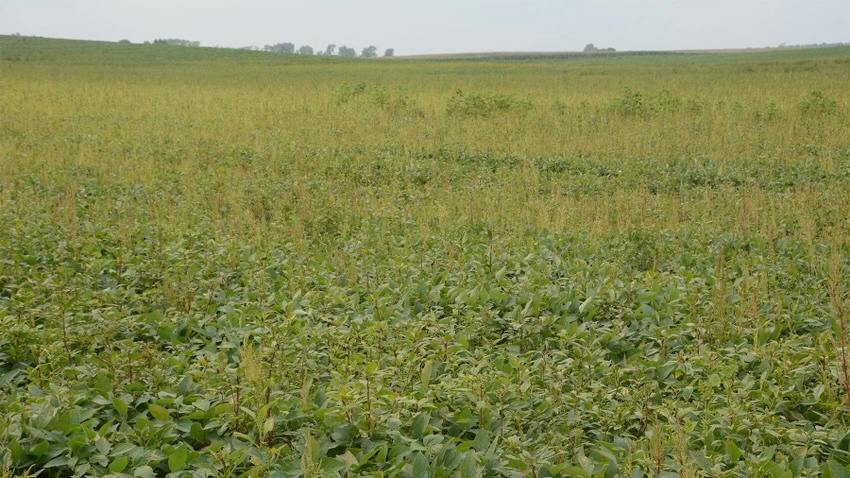Residual herbicides key to battling waterhemp

We kept waterhemp out of our soybeans last year, but it took an extra over-the-top application at $20 per acre. Are there residual programs that would be cheaper and still do the job on waterhemp?
The Indiana certified crop advisers panel answering this question includes Andy Like, independent crops consultant, Vincennes; Jeff Nagel, agronomist with Ceres Solutions, Lafayette; and Marty Park, agronomist with Gutwein Seed Services, Rensselaer.
Like: Yes, you have several residual options to control waterhemp that will be cheaper than $20 per acre. Not only did the postemergence rescue pass cost you $20, but letting waterhemp compete with your beans likely cost you more than $20 per acre in yield. So, using a residual can be cost-effective in more ways than just saving the cost of a late post application.
I would recommend including a residual in your early post application, at V2 to V4, to avoid a late post rescue application. Some popular and effective products are pyroxasulfone, Anthem Maxx and Zidua SC, or metolachlor, which is Dual. Applying these products post allows residual to hit the ground just prior to canopy closure, maximizing chances of season-long control. Remember, these residuals need an activating rainfall to be effective. Try and time application accordingly.
Nagel: Consider it a success if you controlled waterhemp in 2023. Lack of timely rains and an overall drier growing season impacted postemergence herbicide control and reduced control from in-crop residual herbicides. There were a lot of clean fields, but unfortunately, we added to the waterhemp weed seed bank in many soybean and cornfields. Waterhemp and Palmer amaranth are expensive weeds to control, and there are no short cuts.
Here are a few principles for management:
- Use more than one mode of action. Use a herbicide program with two or more modes of action near planting as the foundation. There are several options, and you also need to think about other key weeds you’re targeting. There are “cheap” residuals being promoted at lower rates. They do not have enough active ingredient to provide long enough residual. Work with a trusted adviser on selecting a good residual herbicide program.
- Apply on small weeds. Regardless of trait platform, apply post applications before waterhemp plants exceed 4 inches tall. If the upfront residual works well, start posting beans around V3, or when there are small or a few emerged weeds.
- Layer in more residual. Add an in-season residual with post application. These are limited to the Group 15 herbicides, such as Zidua SC, Warrant, Dual Magnum and Outlook. The intent is to reduce new flushes, but they need rainfall for activation.
- Look beyond herbicides. Cultural practices like narrower row spacing of 20 inches or less, adequate soybean population and cereal rye cover crops can all help in the battle for control.
Park: The use of herbicides with multiple modes of action and multiple sites of action will continue to be critical for long-term weed management. Consider using residual preemergence herbicides as a foundation for your weed control. Layering residuals at preemerge and postemerge is actually the best strategy for waterhemp. I know herbicides get expensive, but the most expensive weed control is poor weed control.

